 The cultivation of cucumbers in household plots is common in our country. Vegetables are consumed fresh or canned. During cultivation, it is important to observe a number of conditions - the absence of direct sunlight, adequate watering and temperature conditions. Special designs help to comply with the climatic conditions of all zones. Many gardeners decide to create greenhouses for cucumbers with their own hands according to photo instructions and drawings.
The cultivation of cucumbers in household plots is common in our country. Vegetables are consumed fresh or canned. During cultivation, it is important to observe a number of conditions - the absence of direct sunlight, adequate watering and temperature conditions. Special designs help to comply with the climatic conditions of all zones. Many gardeners decide to create greenhouses for cucumbers with their own hands according to photo instructions and drawings.
Agriculture has led people to create such a convenient way to cultivate vegetables (including cucumbers) as a greenhouse. However, on a site whose area does not exceed five hundred square meters, it is difficult to establish such a structure. An alternative solution is a simplified version - a greenhouse. In the construction, it is easy to create the required conditions for the cultivation of vegetables. Creating greenhouses for cucumbers with your own hands using photo and video materials is not difficult.
For independent construction, a number of types of structures have been developed. The difference between them in appearance, size, construction materials used and shape.
Content
About the greenhouse - materials, pros and cons
The cost of building a greenhouse is higher when compared with the creation of a greenhouse. The main reason is the material, which should have high qualities of resistance to external factors.

Do-it-yourself greenhouses for cucumbers are a stationary structure, suitable for use regardless of what time of the year. During construction, it is required to observe a number of rules so that the design fulfills its role.
Distinctive features of the greenhouse:
- installation requires a stationary place, there is no mobility element;
- large sizes in comparison with the greenhouse;
- a solid frame that allows the structure to transfer the influence of external factors;
- high-strength material is used for coating.
When building a greenhouse for cucumbers with your own hands, it is important to consider that a person will be present quite often in the room. Accordingly, the requirements of safety regulations, including fire, must be strictly observed.
Mandatory elements of the greenhouse:
- concrete base;
- frame;
- canvas for coating;
- a mechanism for watering (more often it is a hydraulic cylinder);
- opening elements (for the purpose of airing the room);
- heating and lighting systems;
- doorway.
For added convenience and ventilation in greenhouses of a large area, two doorways are arranged.
Variety of species
Self-made greenhouses and greenhouses should protect planted plants from negative external factors. But in greenhouses, another task is assigned to the coating material - lighting the internal space and providing plants with natural light.
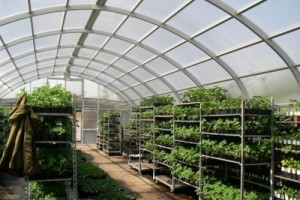 [sc name = "info-dashed" text = "The simplest design option is a box covered with glass, cellular polycarbonate. Greenhouses with a cover from the film do not differ in durability, but the market value of the material makes such a design in demand. ”]
[sc name = "info-dashed" text = "The simplest design option is a box covered with glass, cellular polycarbonate. Greenhouses with a cover from the film do not differ in durability, but the market value of the material makes such a design in demand. ”]
The second version of the construction of facilities for the cultivation of cucumbers is supposed to dig holes (pits). From above, it is blocked by any material that is capable of transmitting daylight.
Important - due to the design features, such a greenhouse is suitable only for growing seedlings. It is impossible to ensure full-fledged growth of planted plants.
Constructive diversity
Today, there are a number of construction structures that are used to cultivate vegetable crops, including cucumbers.
The design, resembling an arch, is divided into two subtypes:
- capital constructions - are installed on a frame assembled from wood, slate, are made of polycarbonate, as well as a profile pipe, are operated for three years;
- collapsible structures - a film or covering material is fixed on arches and serves to protect seedlings from frosts characteristic of the beginning of spring.
Common types of structures are also single and gable structures. Such greenhouses for cucumbers are made of wood, and glass, polycarbonate or film is suitable as a coating material.
Where the climate is especially cold, widespread greenhouses, called in-depth due to the peculiarities of the location. Wooden bars, as well as frames, but always with two glasses, are the recommended materials. Seedlings in such structures are planted even if the snow has not completely melted. Additional thermal insulation is provided by straw laid at the edges.
Today, industry offers options for prefabricated buildings. However, guided by numerous photo and video materials, it is easy to learn how to build a greenhouse for cucumbers with your own hands. You can build it yourself polypropylene greenhouse.
Applicable Materials
For the construction of structures in which you can cultivate cucumbers, use different materials. The frame is made of:
Plank and wooden blocks
An absolute advantage is the natural strength of the material. In addition, low thermal conductivity allows you to save heat in the building, even under critically low temperatures. At the same time, the tree is subject to decay, which requires processing with special compounds.
Pipes made of plastic and marching materials from it
Easy to install, care and do not undergo rotting processes. Of the shortcomings are called low strength. In addition, greenhouses for cucumbers made of plastic pipes cannot be combined with glass.
Profile used in construction for fixing plasterartona
The metal profile is resistant to decay, heavy loads. It is easily disinfected. However, in greenhouses from this material can be formed areas of cold.
To cover the frame are used:
Ppolyethylene lenka, covering material
It features low market value, easy installation. Versatile material that matches with every design. It has a number of disadvantages - instability against external factors, poor thermal insulation.
FROMpolycarbonate
Lightweight material, characterized by high thermal insulation and light transmission. At the same time, polycarbonate is unstable to mechanical stress, expensive.
[sc name = "info-hand" text = "Experts recommend combining materials when building a greenhouse for cucumbers."]
A simple but effective greenhouse
Many gardeners tend to harvest cucumbers as early as possible. The best solution for this is an in-depth greenhouse. The secret of its effectiveness is insulated walls and heating of biological nature.


As shown in the photo, an in-depth greenhouse for cucumbers is easy to make with your own hands from window frames. Its unconditional positive aspects are:
- structural strength;
- high thermal insulation;
- the ability to plant seedlings and get the crop before the thaw.
Of the shortcomings, users of the greenhouse call inconvenience of access and poor ventilation.
In addition to window frames, a beam is required (a base is made of it), peat (can be replaced with straw), organics.
The construction of a greenhouse for cucumbers begins as soon as the snow has melted, and the upper part of the earth is thawing. A trench is excavated, the depth of which is from 50 to 60 cm, and the width does not exceed 100 cm. The length is determined by the number of bushes planned for planting. If the soil is loose, the walls should be reinforced with boards.
The bottom of the dug trench is covered with a layer of manure mixed with sawdust or straw. The layer is necessarily compacted. Further - 20 cm of soil. Straw is stacked on top. This material acts as a heat insulator and also prevents weeds from germinating.
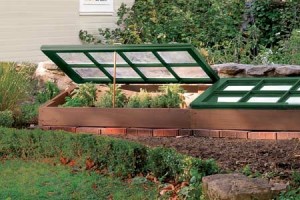 The next stage in creating a greenhouse for cucumbers with your own hands, as the photo shows, is the creation of a box. Brick, slate, boards will do. The outer side of the walls is sprinkled with peat to provide thermal insulation. Some gardeners use bales of pressed straw, which not only support the weight of the frames, but also retain heat in the greenhouse.
The next stage in creating a greenhouse for cucumbers with your own hands, as the photo shows, is the creation of a box. Brick, slate, boards will do. The outer side of the walls is sprinkled with peat to provide thermal insulation. Some gardeners use bales of pressed straw, which not only support the weight of the frames, but also retain heat in the greenhouse.
Window frames are laid on the prepared box. The convenience of using boards as a material for the box is that it is convenient to attach hinges to them. This ensures the convenience of using the structure.
14-21 days before planting the seedlings, the soil is poured with steep boiling water, covered with a film layer and laid on top of the frame. Such conditions will contribute to the heating of organic matter and the soil itself, the greenhouse.
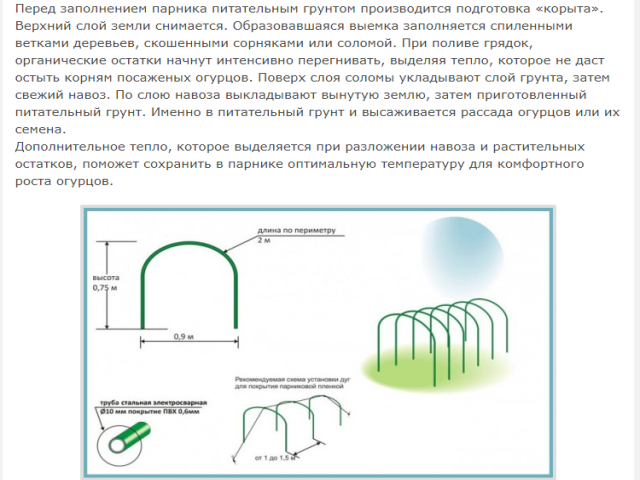
Planting seeds or seedlings in an in-depth greenhouse is carried out in late March, early April (determined by the climatic conditions of the region). Constant humidity and temperature are maintained in the structure, even if the ambient temperature drops below zero. Additional thermal insulation is provided by covering the greenhouse with straw at night. Alternatively, you can build polycarbonate greenhouse on frame.
Place selection
 It is known that cucumber does not tolerate excessive heating and direct sunlight. It is recommended that experienced gardeners install a greenhouse so that the sides are lit from east to west - the interior is maximally lit under such conditions.
It is known that cucumber does not tolerate excessive heating and direct sunlight. It is recommended that experienced gardeners install a greenhouse so that the sides are lit from east to west - the interior is maximally lit under such conditions.
If the structure is installed in an open place, it is better to orient the greenhouse from north to south. Due to this arrangement, the plants will fully receive the morning and evening rays of the sun, not able to burn the foliage.
The end wall is additionally shaded with polycarbonate - so the plants will be protected from the afternoon sun. In the video, the correct orientation of the greenhouse is examined in detail.
To install a greenhouse, it is optimal to choose the part of the site that has a flat topography. Altitude differences are unacceptable - so moisture in the soil will be distributed evenly. The absence of abrupt ascents and descents will provide ease of transportation of the necessary materials, approach for care and watering.
Around the building is recommended to organize free space. This will allow to carry out the required repair, installation or, conversely, the removal of additional insulation.
[sc name = "info-hand" text = "The ideal location for the greenhouse is a well-lit, draft-protected area. Also, there should not be high groundwater, adult trees that require intensive watering should be located. ”]
Construction dimensions
 When constructing a greenhouse for cucumbers with their own hands, a number of factors are of importance. And the size calculation plays an important role. In gardening, the following rule is accepted:
When constructing a greenhouse for cucumbers with their own hands, a number of factors are of importance. And the size calculation plays an important role. In gardening, the following rule is accepted:
one square meter of soil is best planted no more than three bushes to ensure sufficient lighting and uniform distribution of nutrients.
The dimensions of the structure are also affected by the factory dimensions of the materials used.For example, polycarbonate sheets are 2.1 m wide, so the dimensions of a greenhouse should be a multiple of two.
Regarding height. The optimal numbers are 130 cm. Such dimensions will allow plants to grow freely. At the same time, the do-it-yourself greenhouse for cucumbers will warm up fully, the percentage of heat loss is minimal.
Video:

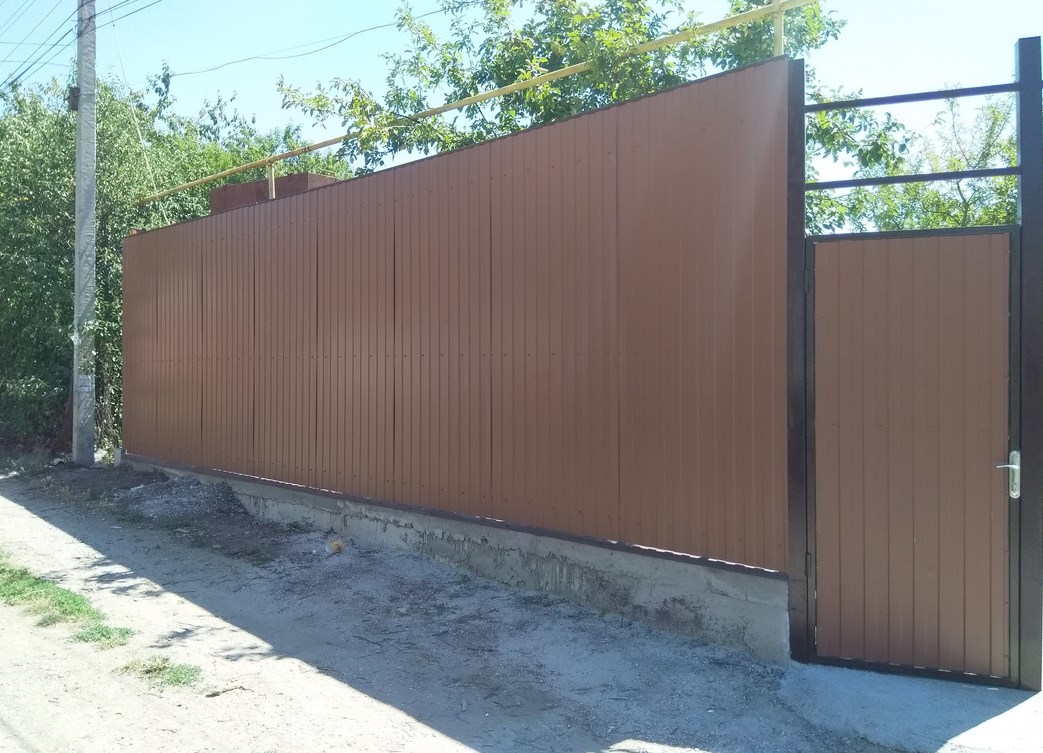
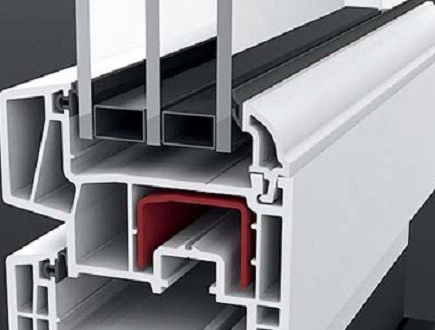
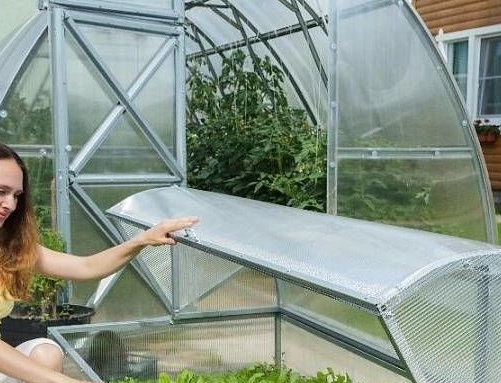
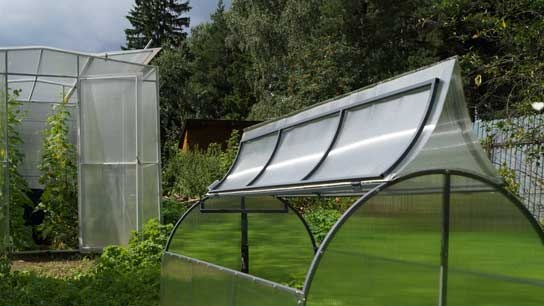 Why is a greenhouse open top?
Why is a greenhouse open top?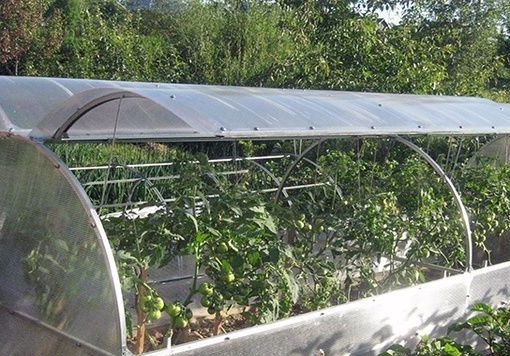 Greenhouse "Butterfly", is it worth it?
Greenhouse "Butterfly", is it worth it?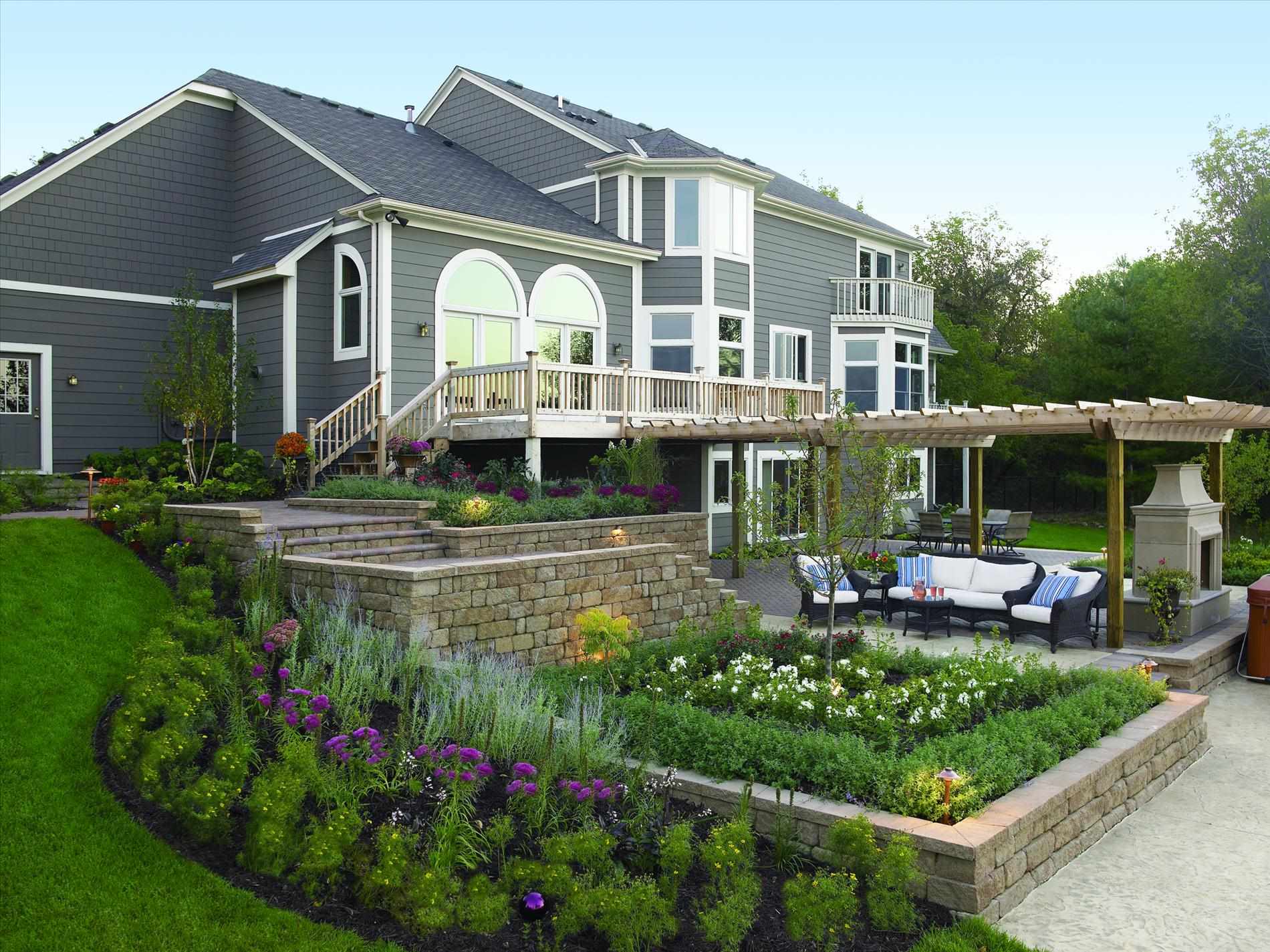 Do-it-yourself landscaping of an area of 8 acres: features of planning and zoning
Do-it-yourself landscaping of an area of 8 acres: features of planning and zoning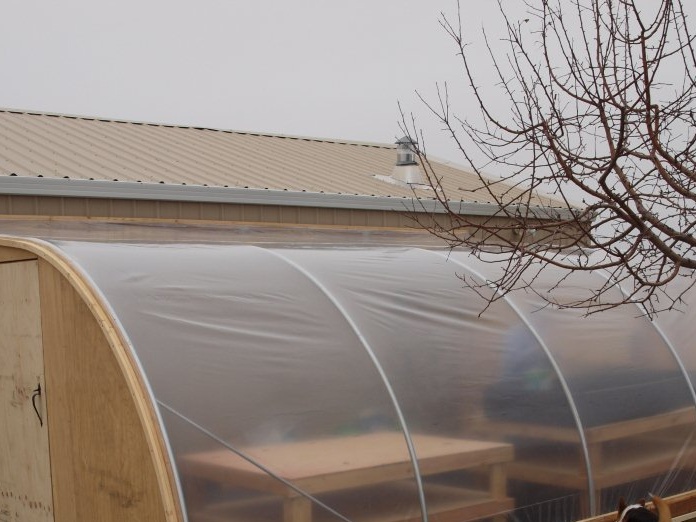 Shed greenhouse, pros and cons
Shed greenhouse, pros and cons